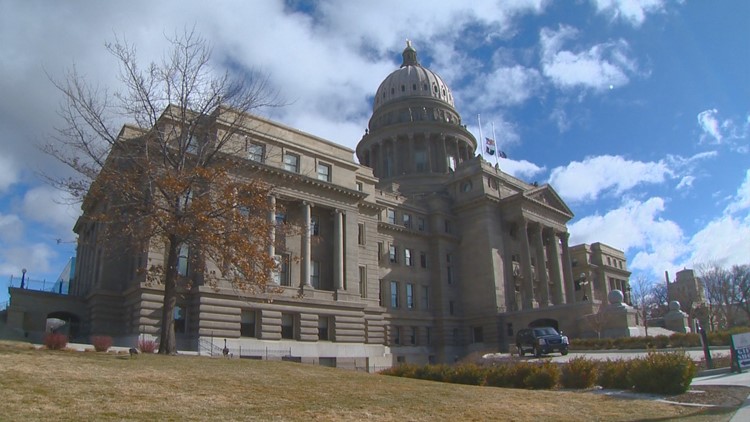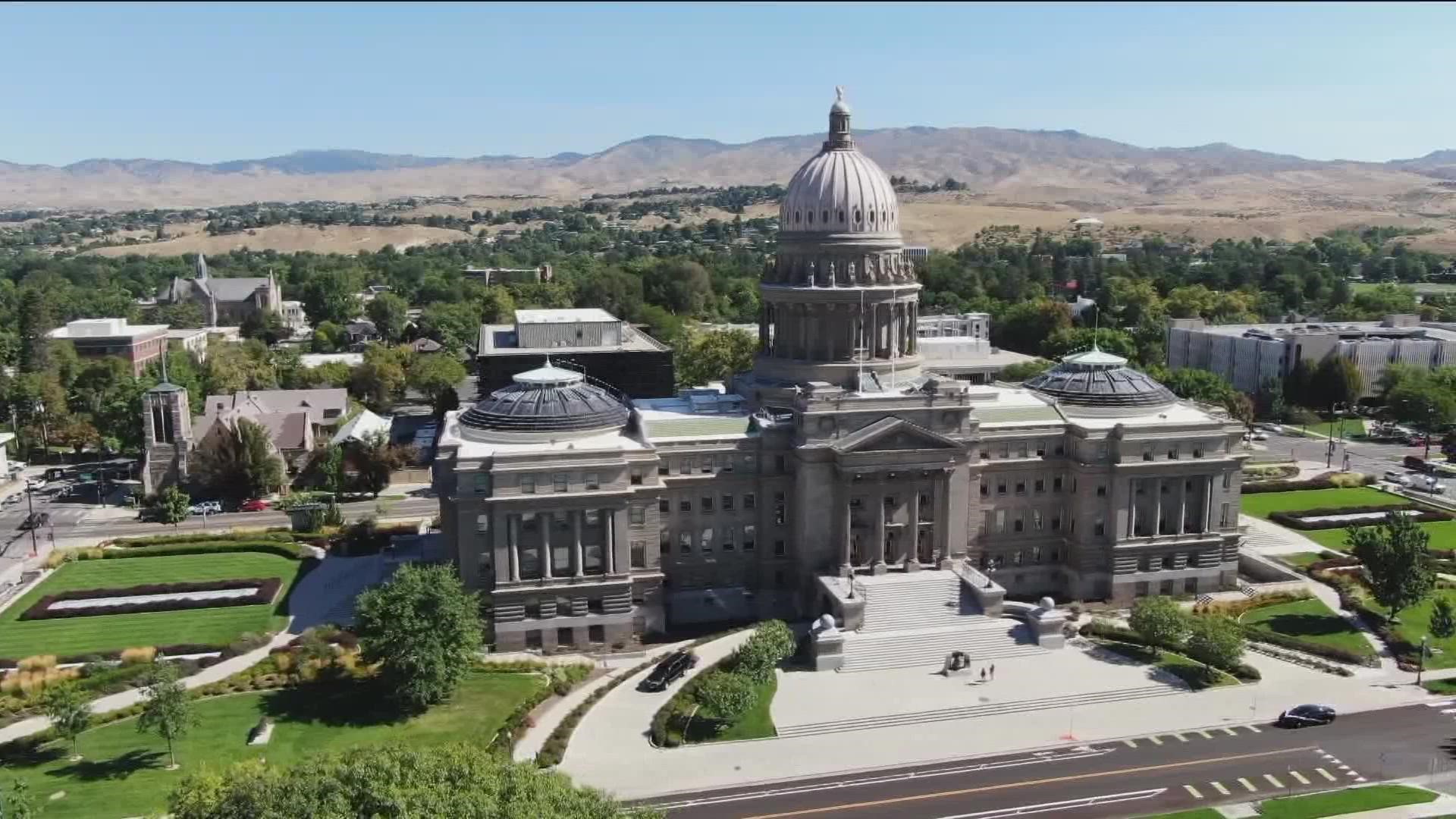BOISE, Idaho — This story originally appeared in the Idaho Press.
The Idaho Senate is launching a new remote-testimony system this legislative session for all committee hearings, including a new online sign-in system for anyone who wishes to testify, whether remote, in-person or in writing.
Meanwhile, the House is continuing to allow committee chairs the option of allowing remote testimony or not. House State Affairs Chairman Brent Crane said his panel will allow it for all hearings, and will use the same signup system as the Senate.
Senate Secretary Jennifer Novak said Senate committee hearings will no longer have paper sheets for sign-ups to testify. Instead, the new online system can be accessed through a link at the bottom of every committee agenda, or through a QR code that will be posted outside the committee room or in the garden-level (basement) rotunda of the Capitol for each committee, next to the Senate elevator and near the Legislative Information Center.
People who scan the QR code for the committee they’re interested in will get the agenda and the bills in question, and will be asked to fill in information including their name; whether they wish to testify in person, remotely or in writing; whether their testimony is for or against the bill; and their address. After they submit their address, the system will automatically fill in their legislative district, to give lawmakers on the committees a sense of from where in the state they’re hearing testimony.
Novak said laptop computers will be set up just inside the doors of committee rooms for those who haven’t already signed up. In addition, anyone who doesn’t wish to use a computer or smart phone to register can go to the Legislative Information Center and get help registering to testify.
“We want to make sure everyone has an equal opportunity to participate,” she said.
Novak said people can go to the Legislature’s website, legislature.idaho.gov, click on any Senate committee, and sign up to subscribe to its agendas. Then, they’ll receive the agenda as soon as it’s issued. “As soon as the agenda’s up, people can sign in,” she said, via the link at the bottom of the agenda.
Crane said he’s committed to allowing remote testimony in House State Affairs. “We want get more citizen involvement from around the state, and remote testimony allows us to do that,” he said. He plans to allow the bill’s sponsor to speak first for 5 minutes; then take in-person testimony with a 2-minute limit; then take remote testimony with the same 2-minute limit and 5 minutes at the end for the bill sponsor to close.
Rep. Caroline Nilsson Troy, R-Genesee, who presented two bills to the committee last week, told the panel, “For many years now, I’ve been trying to get distanced testimony more available to our rural Idaho resident. And it’s great that you’re embracing that now, and right. It’s very difficult for folks to … try and get down here through the weather,” especially in winter. “It’s very important to hear the voices of all our Idaho citizens,” she said.
NOT ONLY NOT REQUIRING MASKS…
Not only is the Legislature not requiring masks in the Statehouse despite the increased spread of the omicron variant of COVID-19, most GOP lawmakers aren’t wearing them or taking other precautions. At the first meeting of the House State Affairs Committee last week, Crane made this announcement:
“Last year we did a very good job of being respectful. I do not plan on having people wear masks in here, but if they want to wear masks, be respectful of that. I don’t want you to give them any grief for wearing a mask.”
REVENUE ESTIMATE ADOPTED
After a fair amount of argument about parliamentary procedure, percentages, math, and whether lower revenue forecasts are “pessimistic” or “conservative,” the Joint Economic Outlook & Revenue Assessment Committee late last week voted, with just two dissenting votes, to adopt the governor’s baseline revenue projection for the current year and next year, after hearing multiple days of presentations about Idaho’s economy.
That comes in at about $5.19 billion in general fund revenue for the current fiscal year, 2022, 3.6% above the FY 2021 level; and about $5.46 billion for fiscal year 2023, the fiscal year that starts July 1, which is 5.3% higher than the ’22 figure.
The two dissenters were Reps. Lauren Necochea, D-Boise, and Sally Toone, D-Gooding. Toone made a substitute motion to instead adopt the committee average — the average of the estimates of all the joint committee members, which was slightly higher for the current year and next year but lower for following year, FY 2024.
“I think we need to be fair to the citizens and pick a number a little closer in the middle … rather than … be so pessimistic,” she said.
Rep. Steven Harris, R-Meridian, said, “If I’m going to support a motion, I’m going to go on the conservative side. I think we want to keep the budget as tight as we reasonably can.”
Necochea, who seconded Toone’s motion, said, “We can go for the most realistic revenue estimate that we can get, and then budget conservatively,” and “leave a lot of dollars on the bottom line in JFAC. That is our practice. … I think it should remain our practice. But I don’t think we should low-ball the estimate,” and adopt a revenue forecast “’that we don’t all believe in.” Toone’s motion failed, 11-4.
The original motion, from Sen. Fred Martin, R-Boise, seconded by Sen. Kelly Anthon, R-Rupert, then passed with just Toone and Necochea dissenting. The next morning, the Joint Finance-Appropriations Committee unanimously accepted the committee’s report, though it won’t necessarily budget to that figure.
One twist to all this: The governor’s revenue forecast this year included four separate forecasts: A baseline forecast, a pessimistic forecast, an optimistic forecast, and a weighted forecast. While EORAC adopted the governor’s baseline forecast, the governor used the weighted forecast, which combines elements of each, in crafting his budget. So the EORAC estimates actually came out about $20 million higher, for each year, than the figures the governor used in his budget.
This story originally appeared in the Idaho Press. Read more at IdahoPress.com
Watch more Local News:
See the latest news from around the Treasure Valley and the Gem State in our YouTube playlist:



